We’ve been sharing our renovation journey for the past 10 years and the questions we get asked again and again are how to budget for home improvements and how much we paid for something (including our house).
Money is a bit of a weird subject though, isn’t it?
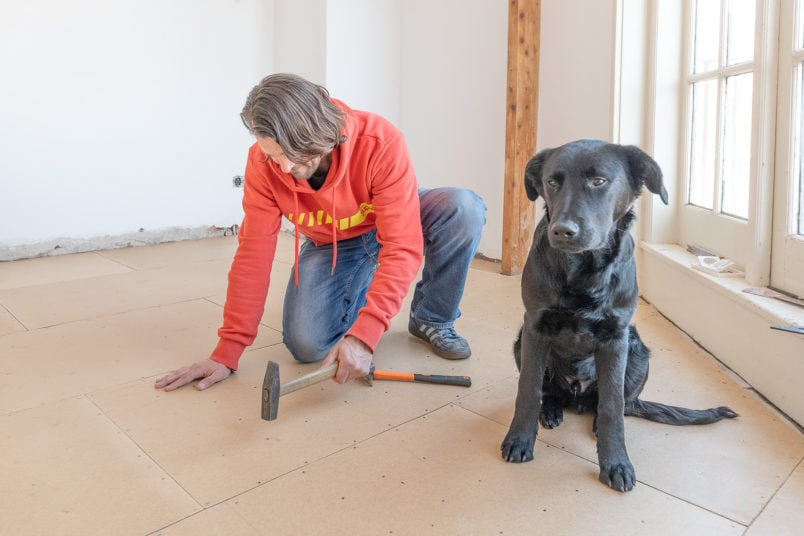
It feels like everyone is sharing amazing interiors with gorgeous (and expensive) furniture, renovations seem to happen at lightning speed and weirdly nobody seems to have any kind of budget restraints when decorating their homes both on Instagram and in Blogworld.
For most of us though, the reality is very different. Weirdly, nobody in the digital space ever seems to mention that all of these home improvements cost money and have to be paid for.
So, how do you create a home renovation budget in the real world with real-life jobs?
No matter how big or small the improvements and changes you’re making to your home are, it’s vital to work out the exact costs before you start any work. It’s surprising how quickly the cost of any project can add up so you should always do as much research and planning as possible before you start any work.
01
Research
Knowing as much as possible about what you’re planning, what building materials cost and how much renovation projects cost in your area are all vital things to know before you start to set your budget for home improvements.
You may want a fancy roof terrace because you found out that the view from your roof is epic but what would that project really entail? Would you need planning permission? Where would the stairs go? How would you access the roof? What condition is the roof in and would you need structural work done to strengthen the roof structure? How would you get the materials up there? Would you actually use the space enough to justify any kind of costs and a huge amount of work?
There are always lots of questions to ask yourself before you embark on any kind of project.
Oh, and in case you’re wondering – yes, I crawled onto the roof and discovered a magnificent view. Think I’m exaggerating?
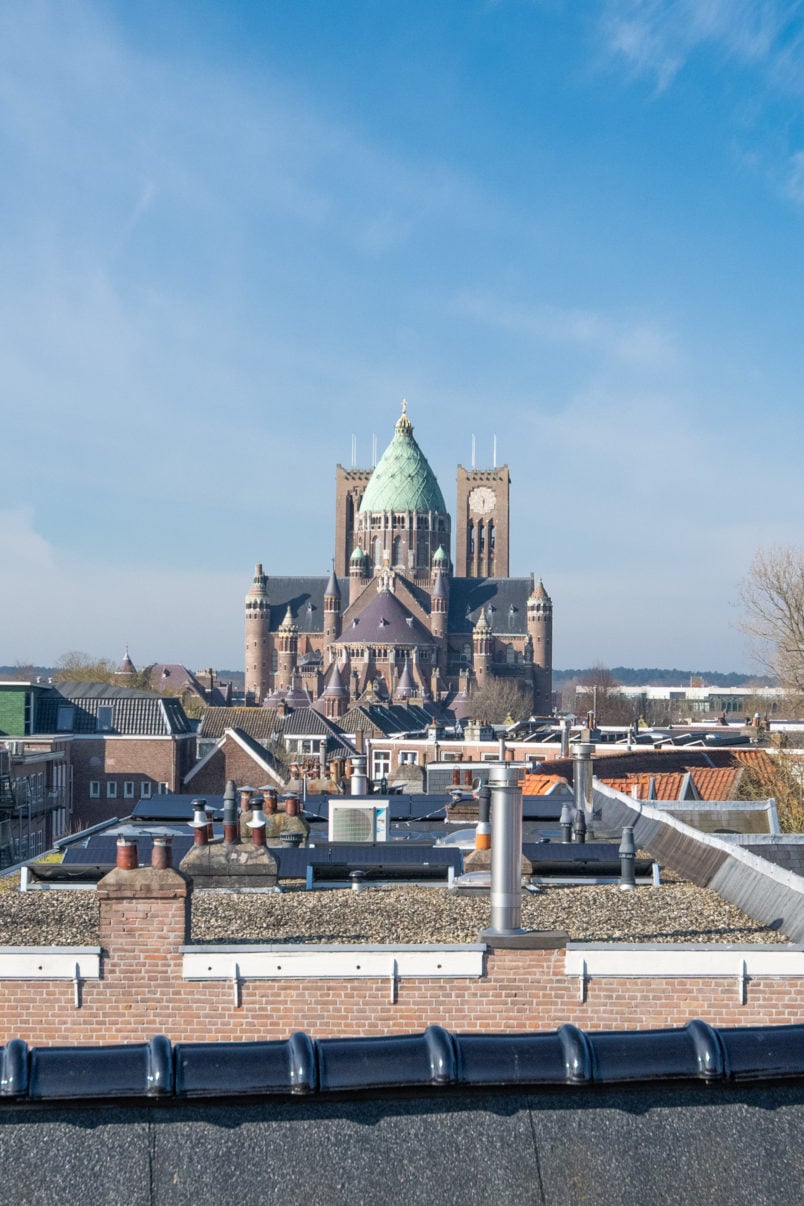
It’s not every day that you find you have a perfect view of the city’s cathedral from your roof! Before you get too excited though, you’re probably not going to see a roof terrace around here any time soon as we’ll probably be installing solar panels.
02
Plan, Plan & Plan Some More
After undertaking as much research as possible, it’s time to start planning and specifying all of the exact details of your project. You really want to go into as much detail as possible so that you not only know how much your project will cost but also have good plans to work to which will also save you money in the long run.
Start by planning your absolute dream space and work out how much it will cost to turn these perfect plans into reality. Set up a spreadsheet to keep track of every single item you need for your room and use it to keep track of how much things cost, items you’ve already purchased and where to order/buy them.
This is what the (still incomplete) list for my study looks like at the moment.
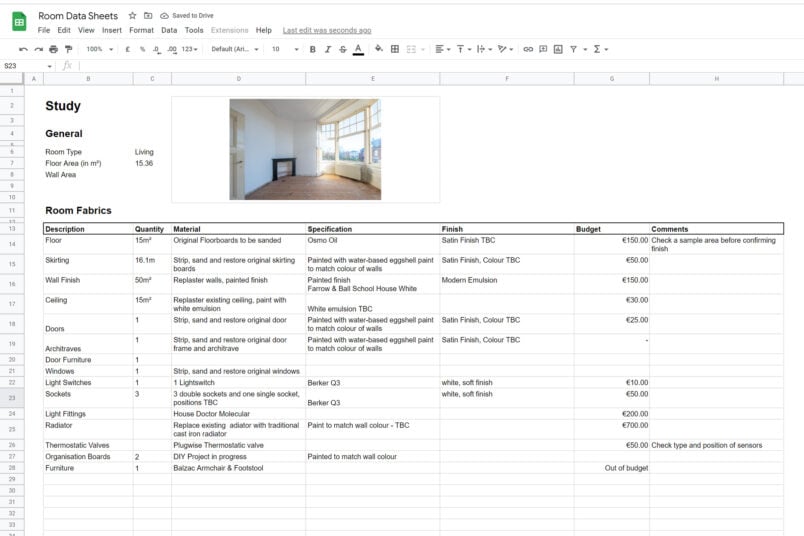
We love using a Google sheet for this as it’s automatically synced to our phones so that we can use it as a shopping list when we’re out and about, too. The list will evolve and change until I’ve finalised all of the details and there are some items that will definitely have to be switched to more budget-friendly pieces (one of these days I will get my Balzac chair!) but it’s a great way of keeping an overview of what you still need to source and what’s already done.
If you’re anything like us, you’ll probably find your initial design also comes in over budget. It’s important to try and be flexible and to make compromises that will save you money but will still result in the same look and feel you’re aiming for.
Think about where you could make savings. Are there alternative products you could use? Are there any jobs that you can DIY instead of paying for expensive tradespeople? Do you really need an expensive armchair that you’ll only rarely sit in?
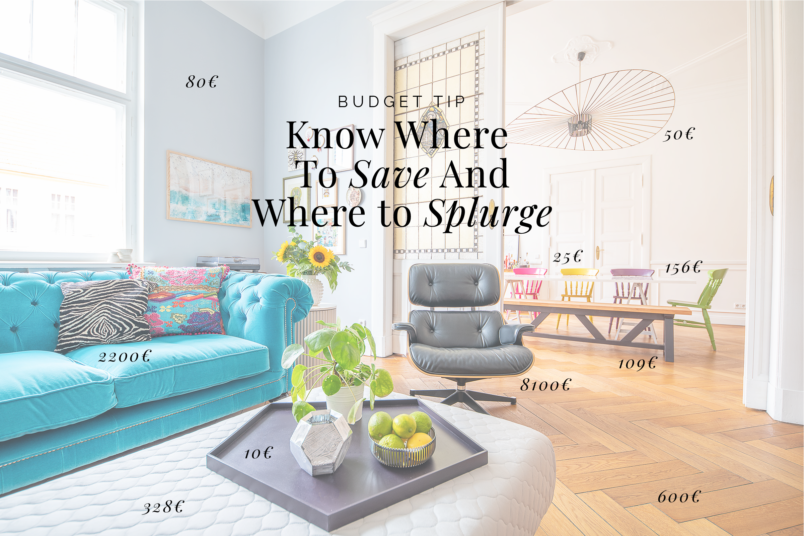
You’ll probably find that you go back and forth between the first step – researching your project and this second step – planning your project. It’s all about making the right changes to your design, sourcing the right products and making the occasional compromise to end up with a design that you’re happy with and can afford.
03
Get Quotes & Adjust Your Plans (Yes, Again!)
Now that you’ve got precise plans, it’s time to get quotes from the tradespeople you’ll need. To keep our overall cost as minimal as possible, we’re obviously big fans of completing as much work as possible ourselves but there are inevitably jobs that you will have to hire someone for, too.
Always get a couple of quotes – we’d recommend at least three – to be able to compare them and check for any numbers that don’t seem right. Planning any kind of renovation work will always involve a bit of compromise and you may find that you have to go back to your plans again to make adjustments depending on how expensive the quotes are.
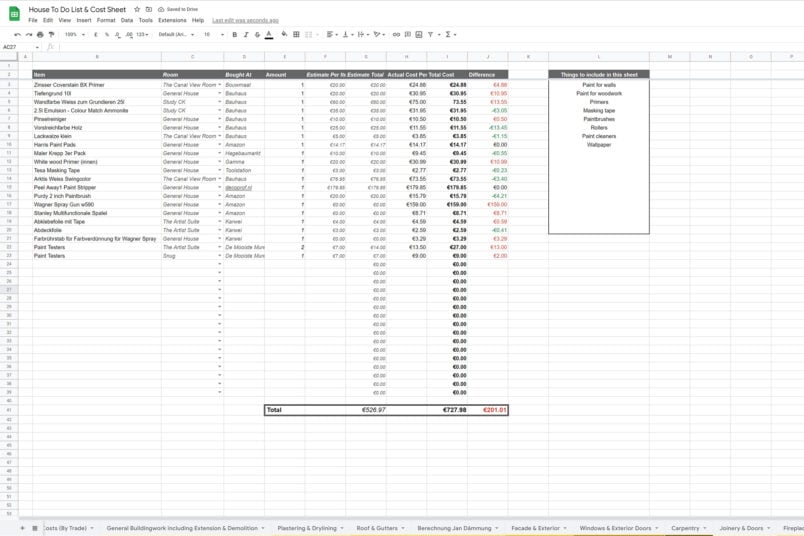
It’s so easy to get carried away when renovating, but it’s vital to sit down and plan all of the costs before you get started. It’s a time-consuming process, but having a clear idea of all plans and costs before you start any work will make it so much easier and much more stress-free later on!
MONEY SAVING TIP
Don’t forget that you can negotiate with your builder to help you come in on budget, too! Read our tips on how to negotiate with a builder here.
How do you track the home renovation costs and keep on top of your renovation budget?
With a whole house to renovate, we’re working on multiple projects and rooms at the same time which can quickly feel overwhelming. To be able to keep track of everything, we have a very detailed home renovation tracker where we keep notes of every expense and estimate to always be able to see where we’re at with our numbers and budget.
Our home renovation budget spreadsheet is the secret to staying on track and on budget for all of our home renovation projects no matter how big or small they are.
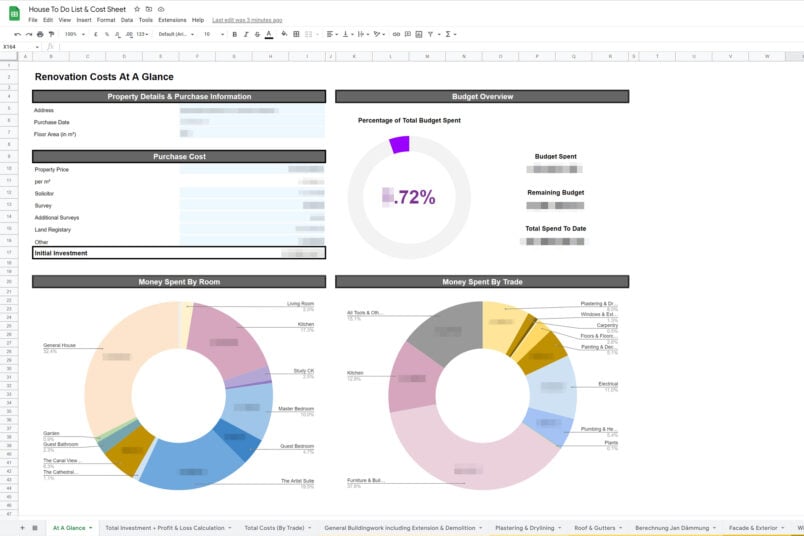
Not only does it help us keep on top of all renovation costs and know exactly where we’ve spent our hard-earned cash, it also includes a super helpful tracker that shows us how much we’ve spent overall and how this compares to other properties in our neighbourhood making it possible to keep track of our return on investment, too.
At one easy glance, we can see all of the numbers, see where we’ve spent our money and even see how much profit (or loss!) we’ll be making on our home if we were to sell it.
We’ve been using this exact spreadsheet for almost 10 years and I honestly believe it’s what’s allowed us to make 6-figure profits on all of the homes we’ve ever owned.
And, for the first time ever, we’re sharing our home renovation tracker with you!
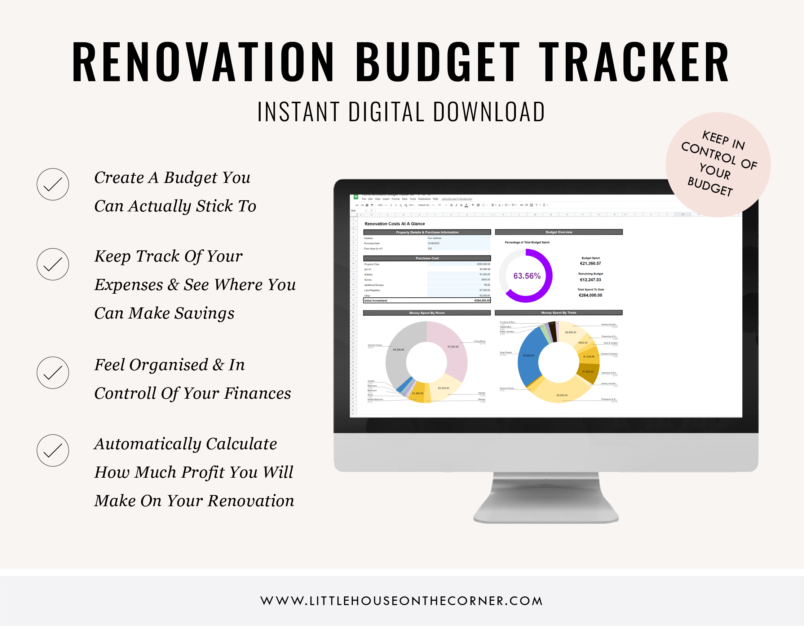
It includes trackers for all trades, you can see how much you’ve spent per trade or per room and, most importantly, you can see if you’re still on track.
To get your copy of our much-loved home renovation budget tracker, just click the link below.
Knowing your numbers is so important, and it doesn’t matter if you use this home renovation tracker or make your own spreadsheet. Just don’t forget to keep track of everything!
Now for a bit of behind-the-scenes money talk! How much does renovating a house cost?
Since moving in, we’ve spent exactly 14908,67€ on home renovations. For us, this feels like a huge amount given that it feels like we’ve not actually done much yet.
Luckily, our home renovation tracker lets us see exactly where we’ve spent the money and, although almost 15000€ is a lot of money, it doesn’t seem quite as bad anymore when we can see exactly where we’ve spent it.
The biggest chunk of money was spent on our electrical work (1638.64€) and the temporary kitchen (1904,36€). We also spent a lot on new tools (2254.59€) including a fantastic new sander that will hopefully help us save time and money by restoring our windows ourselves.
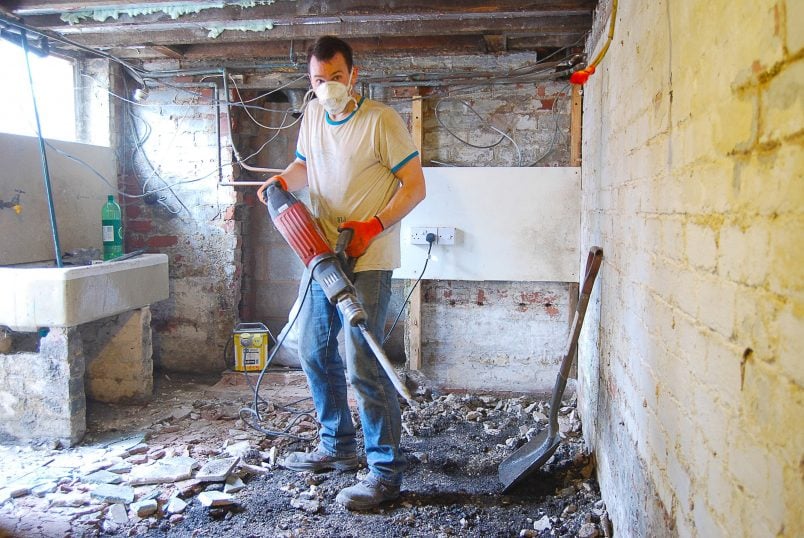
Obviously, this is only a tiny fraction of what we will have to spend to finish the whole house but it is helpful to see how much of our budget we’ve already spent, where we’ve spent it and if our estimates are accurate.
Overall, we’ve budgeted a meagre 750€ per square metre for our renovation. It’s a super-tight calculation but we are doing almost all of the work ourselves, so it should be doable. If you are paying for most of the work we’d recommend budgeting at least double that! (Always remember that exact costs will depend on where you live, the condition of your house and many more factors that will be specific to your home!).

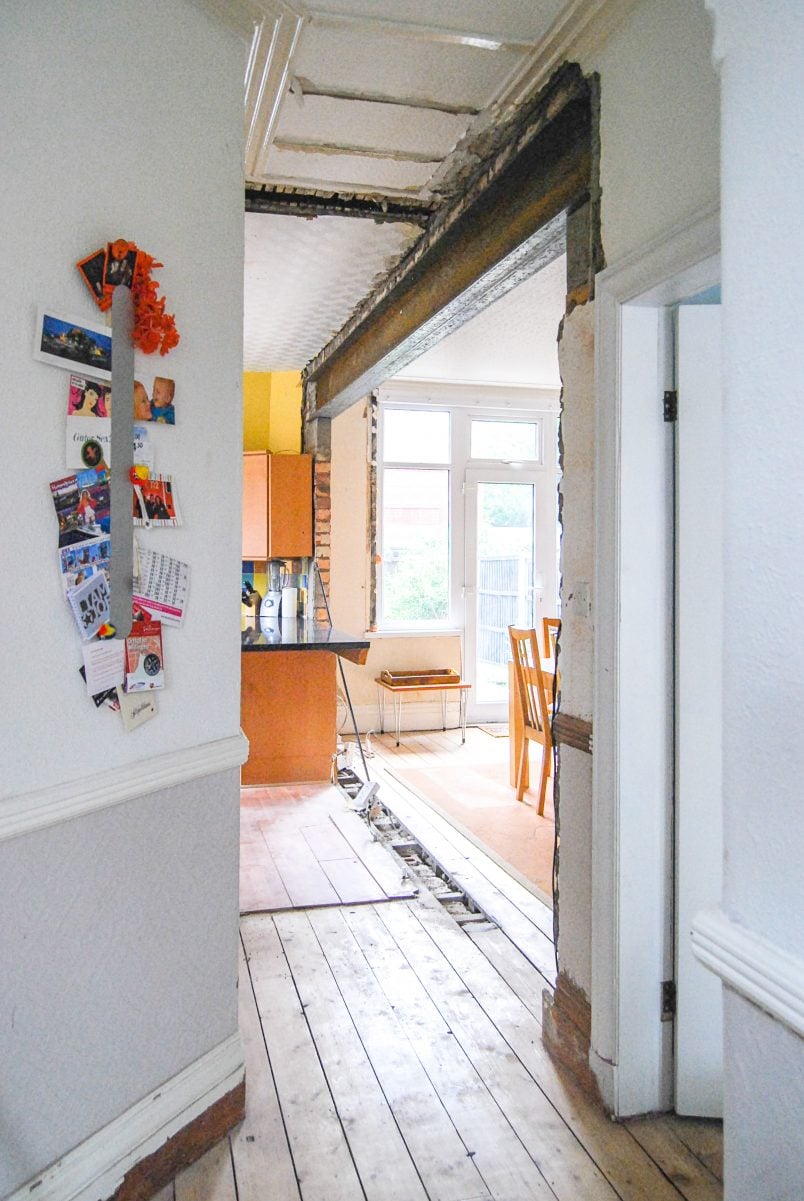
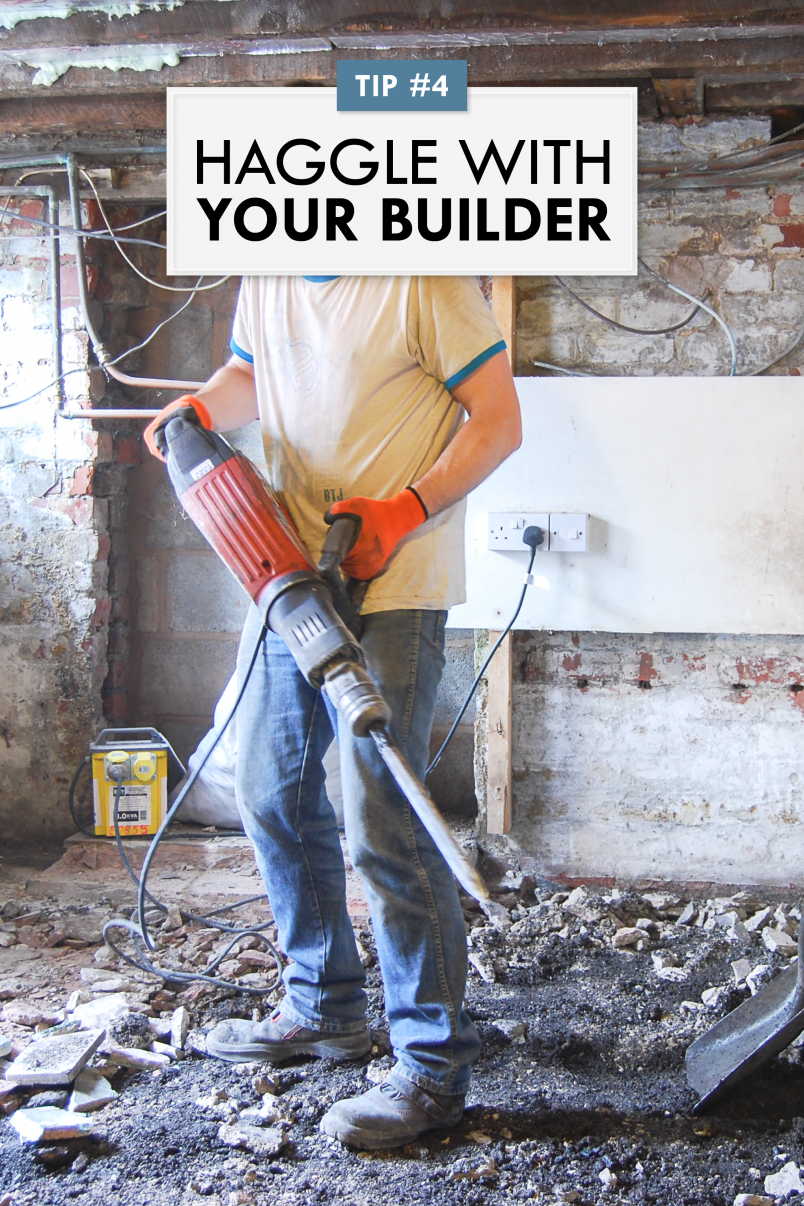
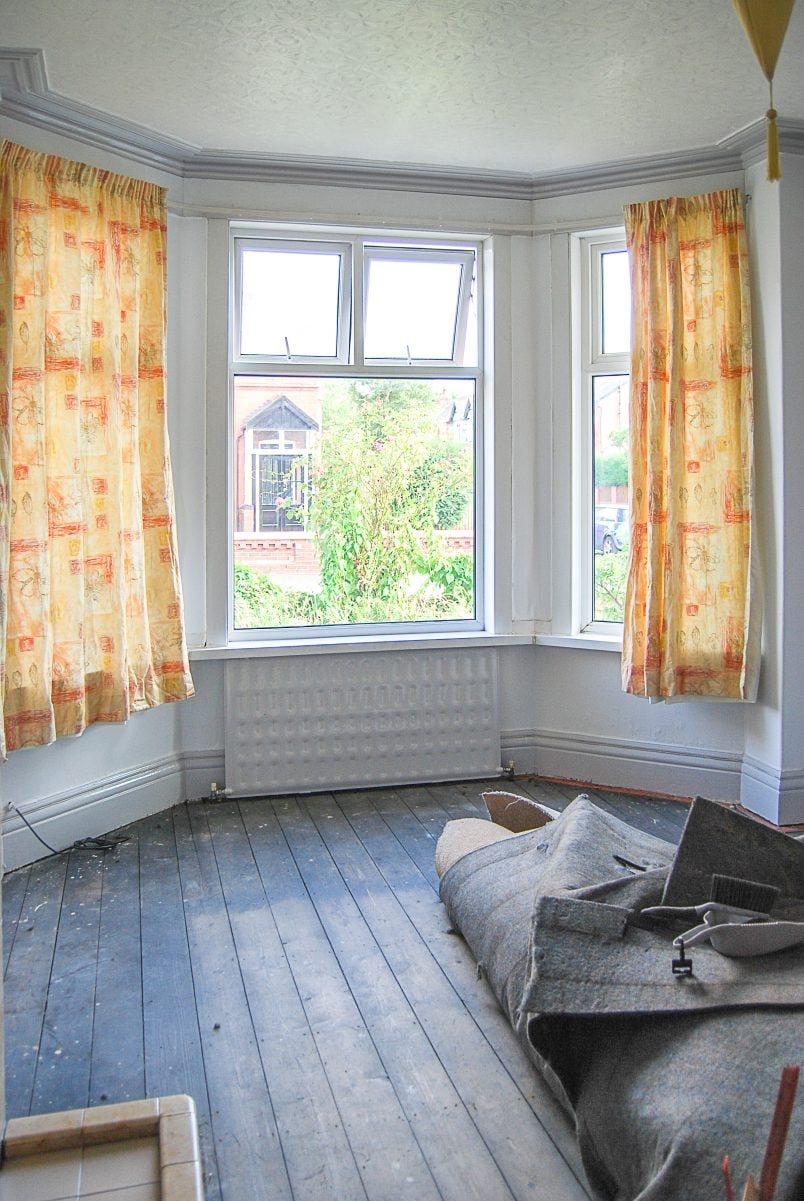


Leave a Reply